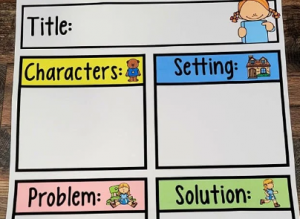
[Pexels]
Story maps, a versatile educational resource, have the power to transform the learning experience in the classroom. These visual tools combine storytelling with mapping to engage students in a creative, interactive, and multidisciplinary approach to learning.
In this blog post, we will explore the benefits of using story maps in the classroom and provide insights into how educators can effectively integrate them into their teaching methods.
The Power of Story Maps

Story maps are a dynamic way to merge geography, narrative, and multimedia elements to convey information and tell stories. Using these story map worksheets can offer a host of advantages for both teachers and students:
Visual Learning: Story maps utilize maps, images, and videos, making complex information more accessible and engaging for visual learners.
Interactive Engagement: Activity through a more visual medium encourage an interactive learning experience, allowing students to explore, click, and interact with the content.
Multidisciplinary Approach: Story maps can be used across various subjects, from geography and history to literature and science, promoting a holistic understanding of concepts.
Tailored Learning: Educators can customize story maps to meet specific learning objectives, adapting them to the needs and interests of their students.
Critical Thinking: Analyzing and creating story maps require critical thinking skills, as students must organize information, draw connections, and make decisions about what to include.
Digital Literacy: Using story map platforms introduces students to digital tools and enhances their digital literacy skills.
Effective Ways to Use Story Maps in the Classroom
Now that we understand the potential of story maps, let’s delve into effective strategies for using them in the classroom:
1. Geographic Exploration

[Unsplash]
Geographical Case Studies: Create story maps that delve into specific geographical case studies. For example, explore the impact of climate change on a particular region or analyze the geography of a recent natural disaster. This approach helps students understand complex real-world issues.
Comparative Geography: Develop story maps that allow students to compare and contrast the geography of different regions or countries. This helps them gain a deeper appreciation of global diversity and the impact of geography on culture and history.
2. Historical Journeys

[Pexels]
Primary Source Integration: Incorporate primary sources like maps, diaries, and photographs into historical story maps. Students can analyze these sources to gain a richer understanding of historical events and perspectives.
Interactive Timelines: Use story maps to create interactive timelines of historical events. This provides students with a visual representation of the chronological sequence of key events and their historical significance.
3. Literature Companions
Character Development: Dive deeper into literature by using story maps to explore character development. Students can track how characters change over the course of a novel, identifying key moments and motivations.
Symbolism and Themes: Encourage students to create story maps that analyze symbolism and themes in literature. They can visually represent recurring motifs, helping their peers grasp the deeper meanings within texts.
4. Collaborative Projects

[Pexels]
Cross-Curricular Connections: Promote cross-curricular collaboration by assigning projects that require students from different subjects to work together. For example, science students can collaborate with history students to create a story map about the history of scientific discoveries.
Peer Review: Encourage peer review within collaborative projects. Students can assess each other’s contributions to ensure a well-rounded story map.
5. Real-World Applications

[Pexels]
Advocacy and Solutions: Challenge students to use story maps as platforms for advocating social or environmental change. They can create maps that raise awareness about issues like climate change or access to clean water, providing data, solutions, and calls to action.
Interviews and Testimonials: Include interviews and testimonials within story maps to provide real-world perspectives. Invite guest speakers or community members to contribute to student projects, adding authenticity to the content.
6. Field Trips and Virtual Tours
Field Trip Reflections: After field trips, use story maps as a platform for students to reflect on their experiences. They can document what they learned, their favorite moments, and how the trip related to classroom lessons.
Interactive Exploration: Enhance virtual field trips by incorporating interactive elements such as quizzes, challenges, or opportunities for students to make choices that impact their learning journey.
Wrapping Up: A New Way to Tell a Story

[Unsplash]
Story maps are a versatile educational tool that can breathe new life into classroom learning. They engage students in dynamic, interactive experiences that enhance comprehension and retention of subject matter. By integrating story maps into teaching methods, educators can harness the power of technology and storytelling to create a more engaging, multidisciplinary, and memorable learning environment for their students.
